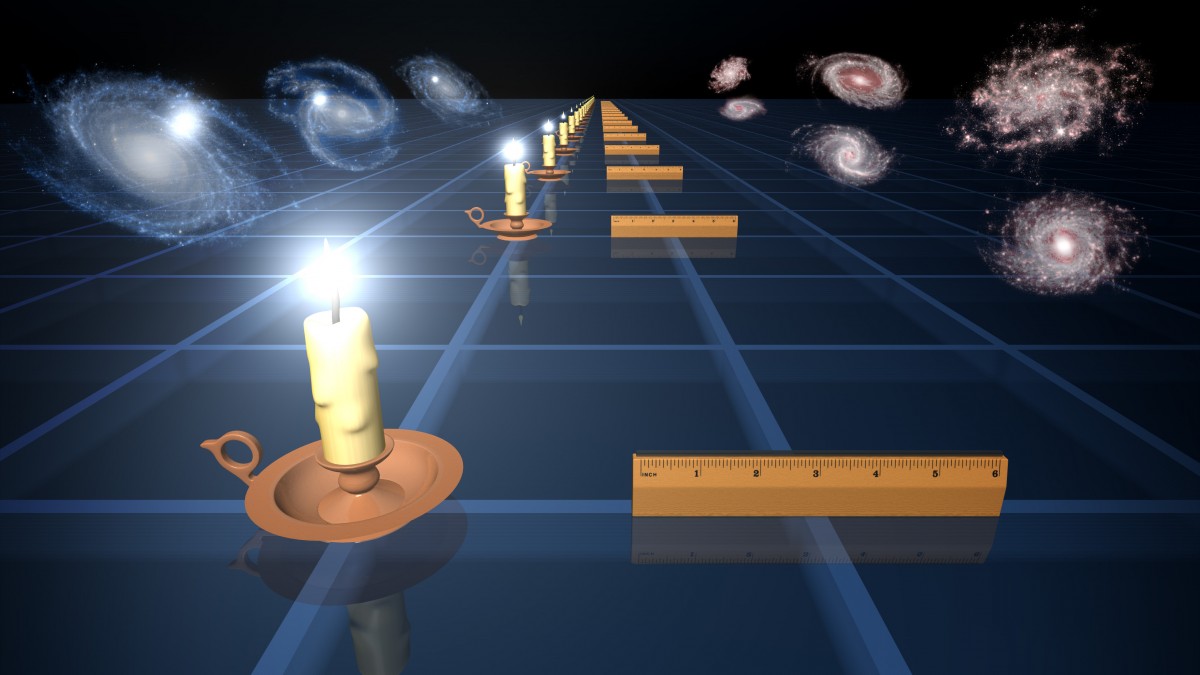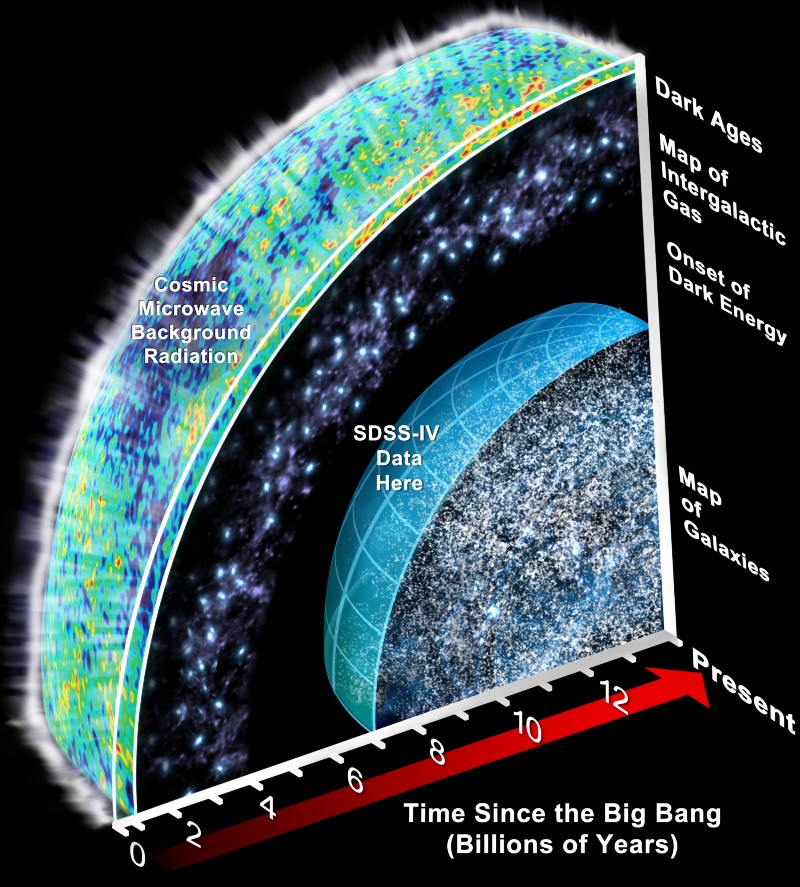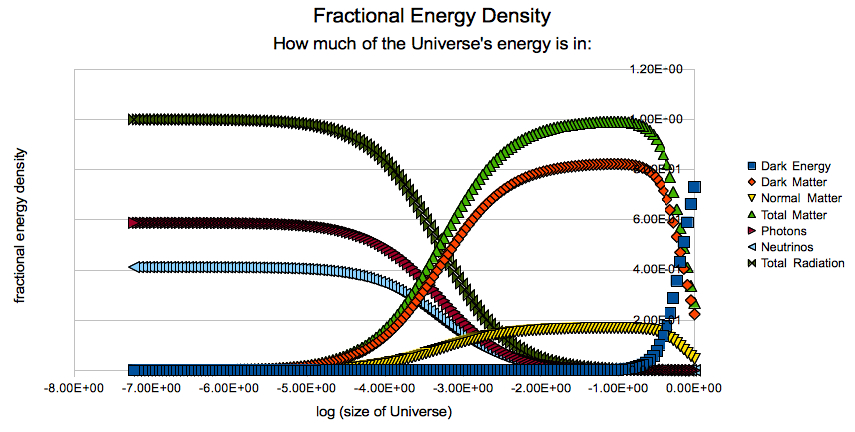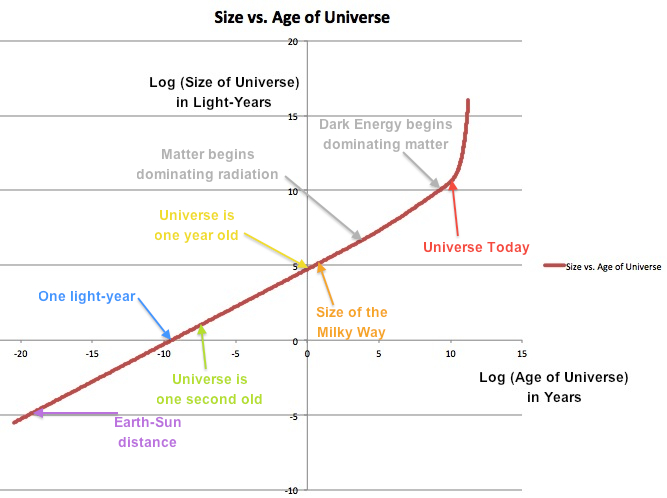Ask Ethan: What size was the newborn Universe?

You may imagine the Universe infinite, and, frankly, it may indeed be so - but I don’t think we will ever know about it. Thanks to the Big Bang - the fact that the universe has a birthday, and that we can’t wind back time is not infinite - and the fact that the speed of light is finite, we are limited in what part of the universe we can observe. Having survived to this day, the observable part of the universe is 13.8 billion years old, extends to 46.1 billion light years in all directions from us. So what size was it then, 13.8 billion years ago? Joe Muskarella asks:
I read very different explanations about the size of the universe immediately after the end of cosmic inflation. One source claims that it was 0.77 cm in size, the other - the size of a soccer ball, the third - which is larger than the observable universe. So what is the correct answer?
It was a good year for questions about the work of Einstein and the nature of spacetime. This is fully consistent with the 100th anniversary of the General Theory of Relativity. Let's start by discussing the universe we see.
')

Observing distant galaxies, as far as our telescopes can glance, we can easily measure some of the parameters of a particular galaxy, namely:
• The amount of its redshift, that is, the shift of the light emitted by them from the inertial rest system,
• Visible brightness, or the amount of light that has come down to us through a large distance,
• Visible size, or size in angular degrees, occupied by it in the sky.
This is very important because if we know the speed of light (one of the few things we know for sure), and its own brightness or object size (we think we know them), then we can calculate how far away this object is

In fact, we can only estimate the brightness and size of the object, using some assumptions. If you see a supernova explosion in a distant galaxy, you assume its own brightness based on a closer supernova that was once observed, but you also assume that the supernova had the same environment, it was the same, and there is no one between you and it. nothing that would change the signal you receive. Astronomers call these three assumptions the effects of evolution (whether an older / more distant object is different), environments (if these objects are not at all where we think) and fading (if something blocks light), in addition to those effects, the effects of which we do not suspect.

If we have correctly guessed our own brightness (or size) of a visible object, then we can determine the distance to them based on a simple ratio of brightness to distance. Moreover, by measuring the redshift, one can find out how much the Universe has expanded during the time when the light went before us. And since there is a well-defined relationship between matter / energy and space-time — what Einstein GTR gives us — we can use this information to determine different combinations of all forms of matter and energy that are present in the Universe.
But that's not all!

If you know what your Universe is made of, and we have this:
• 0.01% - radiation (photons)
• 0.1% - neutrino (a million times less massive than electrons)
• 4.9% - ordinary matter, including planets, stars, galaxies, gas, dust, plasma, black holes
• 27% - dark matter, gravitationally interacting with the usual, but different from all particles of the Standard Model
• 68% - dark energy, forcing the expansion of the universe to accelerate
then you can use this knowledge to reverse extrapolate in time to any point in the past of the Universe, and find out what mixture of energy density was then, and what size it was at any moment.
So, especially for you, Joe, I did all the calculations. And marked them on a logarithmic scale, as more informative.

It is evident that although the contribution of dark energy today is great, but this situation has arisen recently. For most of the first 9 billion years of the history of the universe, matter - a combination of normal and dark matter - was the main component of the universe. But the first few thousand years, radiation (in the form of photons and neutrinos) was even more important than matter!
I list all this, because different components, radiation, matter, dark energy, affect the expansion of the Universe in different ways. Although we know that today the Universe extends for 46.1 billion light years in any direction, to calculate its size at a given moment we need to know the exact combination of what was in it in each of the eras in the past. Here is what it looks like.

Several interesting milestones in the past:
• The diameter of the Milky Way is 100,000 light years. The observable universe had such a radius when it was 3 years old.
• When the universe was a year old, it was much hotter and denser than today. This means that the temperature of the universe exceeded 2 million Kelvin.
• At the age of one second, it was too hot for stable nuclei to appear in it. Protons and neutrons were in a sea of hot plasma. In addition, the entire observable universe had such a radius that if we outlined it around our present-day Sun, it would include only seven nearest star systems , the most distant of which is Ross 154 [ 9.6 light years - approx. trans. ]
• Once the radius of the universe was equal to the distance from the Earth to the Sun, it was at the age of seconds The expansion rate of the then universe was in times more than today.
We can go back and forth, where inflation first ended, giving rise to the Big Bang. We would like to extrapolate the Universe back to a singularity, but inflation eliminates this need. It replaces it with a period of exponential expansion of indefinite duration, and it ends with the birth of a hot, dense and expanding state, which we associate with the beginning of the Universe. We are connecting to the last tiny bit of inflation somewhere between before seconds Whenever this happens, we need to calculate the size of the Universe precisely at the end of inflation and the beginning of the Big Bang.

The image is slightly out of date - the age of the universe is 13.8 billion years
Again, we are talking about the size of the observable universe. The real “size of the Universe” is certainly much larger than we can see, but we don’t know how much. Our best observations, the Sloan Digital Celestial Survey and the Planck Space Observatory, let us understand that if the Universe is bent, closing itself somewhere, then the part we see is so indistinguishable from the flat Universe that the whole Universe should be at least 250 times more than the radius of its observed part.
In principle, it may generally be infinite, since we do not know what it was doing in the early stages of inflation. Everything that happened until the very last fraction of a second in the history of inflation was cleared, judging by what we can say about inflation on the basis of observations. But if we talk about the size of the observable universe, and take into account that we can only achieve the gap between and seconds of inflation before the Big Bang, then we know that then the observable part of the Universe was 17 cm in size (for ) up to 168 meters (for ), and just such it was before the start of the hot and dense state, which we call the Big Bang.

The answer about 17 cm, by the way, roughly corresponds to the size of a soccer ball! So, if you were wondering which of the above suggestions was closer to the correct one, you can use it. Less than a centimeter is too small, we have restrictions arising from the CMB, saying that inflation could not end at such high energies, that is, such a size of the Universe at the beginning of the Big Bang is excluded. The answer about the size larger than the current Universe, apparently, related to the estimated size of the entire non-observable Universe, which is probably correct, but it is still not possible to measure it.
So what size was the universe when it was just born? If our best inflation models are correct, then somewhere from the size of a human head to a city block with skyscrapers. And if from that moment we wait a little, just 13.8 billion years, then you will have all of our today's Universe.
Source: https://habr.com/ru/post/400843/
All Articles